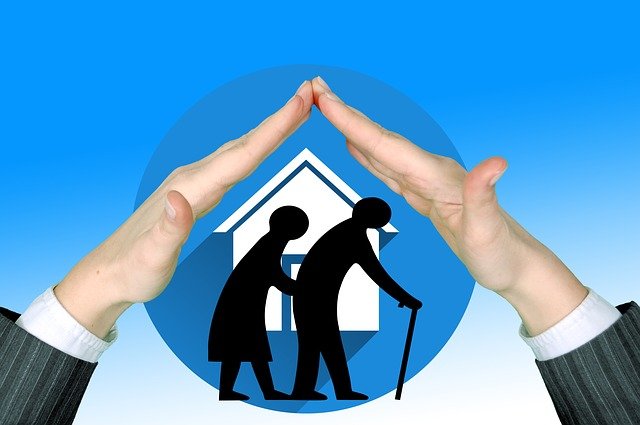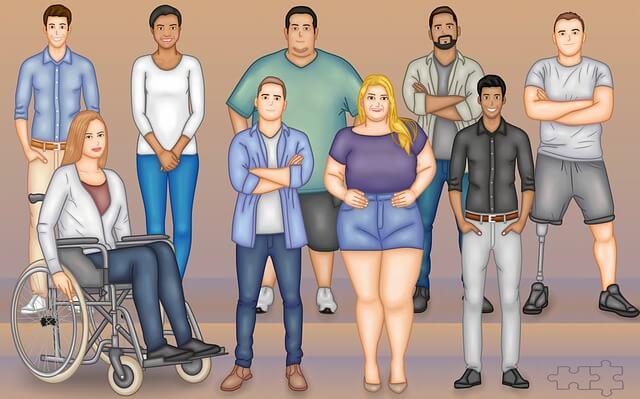Health
المقررات الدراسية موسومة بـ "Health"
Learn about the different kinds of discrimination and legislation surrounding it, in health and care. This course is ideal for intermediate learners.
Introduction
Someone's culture is the social group that they are brought up in, so identifies who they are. However, this may change later in life if that person decides that another culture suits them better.
In the health and social care profession you are likely to meet people from many different cultures to your own. This may mean that they have different ideas and opinions to yours, possibly some that you do not understand.
However, it is important that you respect this culture and the differences this may create as this will create a sense of support. Understanding someone else's culture promotes wellbeing and their health and experience within the service.
Furthermore, this is also important to the professional’s own working experience because they will be rewarded for providing this care value base when they see the results that this can bring. This emphasises the importance of respecting culture.
We will work through this course by going though each of the topics below.
You will learn
- Discriminatory Practices in Health & Social Care
- Discriminatory Behaviour
- The Effects of Discriminatory Behaviour
- Key Legislation for people in care settings
- Key Legislation for disability discrimination
- Key Legislation for discrimination in sex, race and age
- Anti-Discrimination in Service Provision
Principles of Health & Social Care Ethics
In this course Learn about the 4 principles of health and care. This course is ideal for intermediate learners.
Introduction
Ethics are a system of moral principles, or standards of behaviour, and are part of the way that someone makes a decision and how they live their lives. The subject of ethics looks at what is good for society and individuals.The 4 principles of health and social care ethics provide guidelines that help professionals to make decisions, when faced with complicated situations involving patients. They play a key role in ensuring an individual’s safety and care.
Ethics tends to cover the following life problems or dilemmas:
· How we should live a good life
· What our rights and responsibilities are
· What language is used for right and wrong
· Moral decisions - what is good and bad?
You will learn
The four principles of ethics in health and social care practice· Autonomy
· Beneficence
· Non-maleficence
· Justice
Equality and Diversity
Learn about equality and diversity in health and care. This course is ideal for intermediate learners.
Introduction
The health and social care sector recognises the need to treat everyone equally, and therefore equality, diversity and rights affect all those working in the sector as well as those who use health and social care services.It is important that these terms, equality, diversity and rights, are at the very core of everything that is done.
Equality, diversity and rights ensure that everyone is treated the same, regardless of the following:· Gender
· Sexuality
· Ethnicity
· Language
· Race
· Age
· Sexual orientation
· Background
· Beliefs
· Disability
· Education
· Skin colour
Equality, diversity and rights will have different effects on your career and an impact on the people you care for as they mean different things. For example:
Equality
Equality looks at how everyone should be treated in the same way. This means that every individual should have the same rights, status or opportunities.
Laws
Laws have been put in place to ensure that this happens and organisations have to write and adhere to equality policies (guidelines that tell an organisation what to do in a particular situation) which outlines what they must do and how they should do this, so that everyone is treated equally.
You will learn
- Introduction to Equality, Diversity and Rights in Health & Social Care
- Groups, Stereotyping and Labelling
- Promoting Equality & Diversity rights in a Health & Social care setting
- Protected Characteristics
- Equality - Rights in the Social Care setting
Codes of Practice
Learn about codes of pratice in health and care. This course is ideal for intermediate learners.
Introduction
Codes of practice, or codes of conduct, set the standard of behaviour that is expected of health and social care workers. They also guide professionals on their roles, rights and responsibilities.
Furthermore, they outline the behaviours and attitudes that are expected from the people who use the services and helps them to understand what support to expect too.
Most health and social care staff will have codes of conduct to follow with standards that are specific to that area of social care or healthcare. However, they do tend to overlap as all health and social care professional are required the delivery of quality care to people.
You will learn
- Codes of conduct and the guidelines they provide to support those in the health and social care secto
- Codes of conduct for
healthcare and social care workers
- How the code supports
workers and others
- 7 principles of the code
Introduction
Social development is an important part of a person’s life. Successful social development helps people live a fulfilling life, one that can be shared with family, friends, co-workers and acquaintances.The social development of children is closely linked to their emotional development. Through play, children learn that it is good to be with other people. When babies and toddlers play with adults, they learn that they can trust people. When young children play with each other they understand that they are happier when they are with their friends.
Social skills consist of verbal and non-verbal communication between people. It includes the way people speak, make gestures and facial expressions, and use their body language. Children that learn how to develop and use these skills can behave appropriately in social situations and follow social rules.
You will learn
By the end of this session you will be able to:• List the areas of a child’s development
• Understand what social development involves
• Identify what the social development of babies, toddlers and young children involves
• Understand the adults’ role in the social development of children
Units of Measurement
Introduction
To be able to measure something, you need to know what unit to use. A unit is a general term that means a type of measurement.A unit is any measurement that there is 1 of, such as:
· 1 metre
· 1 second
· 1 metre per second (1 m/s)
· 1 gram
· 1 square centimetre (1 cm2)
Units of measurement are standardised, meaning that there is a well-defined way to measure them.
We can use both metric and imperial units of measurement to measure things such as length, weight and capacity. Below are examples of units used in the metric and imperial systems:
Metric
· Length – units include millimetres, centimetres, metres and kilometres.
· Weight – units include grams and kilograms.
· Capacity – units include millilitres and litres.
Imperial
· Length – units include inches, feet, yards and miles.
· Weight – units include ounces, pounds and stone.
You will learn
- Be able to identify imperial and metric measures commonly used in the UK
- Understand when different units of measurement are used in everyday contexts
- Know the abbreviations for commonly used imperial and metric units of measurement
- Be able to convert between imperial units
- Be able to convert between metric units
Temperature
Learn about temperature, how to identify, read and compare thermometers used for different purposes and with different scales. This course is ideal for intermediate learners.
Introduction
Temperature refers to how hot or cold something is.Temperature is measured in degrees. The symbol for degrees is a small circle that sits slightly above the number in temperature.
The two most common scales are Celsius (°C) and Fahrenheit (°F). In the UK, we usually measure temperature in Celsius (°C).
On a standard thermometer, the left hand side measures temperature in Celsius, ranging from 0 (freezing point) to 100 (boiling point). The right hand side measures temperature in Fahrenheit, ranging from 32 (freezing point) to 112 (boiling point).
We measure temperature using a mechanical or electrical device called a thermometer. There are lots of different types of thermometer.
Thermometers may be digital or analogue.
A digital thermometer gives a reading in figures and an analogue thermometer uses a scale.
You will learn
- Identify, read and compare thermometers used for different purposes and with different scales
- Read scales to the nearest labelled and unlabelled division
- Read positive and negative temperatures
- Solve simple problems relating to temperature
Public Services are in Place
Learn about why public services are important and what are the needs of a diverse society. This course is ideal for intermediate learners.
Introduction
The public services play a vital role in our lives. We need the public services to meet the needs of a diverse society.The concept of diversity encompasses acceptance and respect. It means understanding that each individual is unique, and recognizing our individual differences.
You will learn
- Why public services are important
- What makes people diverse
- A range of reasons why public services are in place
The Cost of Public Services
Learn how much public services cost and how charities contribute to them. This course is ideal for intermediate learners.
Introduction
The top three spending categories include:· Social protection
· Health
· Education
The following categories explain where the Government spends money:
Social protection costs £222 billion (the figure is for training purposes only)
The most money is currently spent on social protection (or welfare) which helps those who are disadvantaged, including:
o Pensions
o Disability benefits, such as cars, parking and prescriptions
o Housing, such as accommodation and upkeep
o Unemployment benefits
o Family benefits, for instance tax credits
Social security spending in UK
Over 55% of social security expenditure goes to pensioners.The government is forecast to spend £121 billion on pensioners and £94 billion on working age people and children this year. In 2017 to 2018 £121 billion was spent on pensioners and £96 billion was spent on working age people and children.
You will learn
- How much public services cost the government
- The top three spending categories
- How charities contribute to public services










